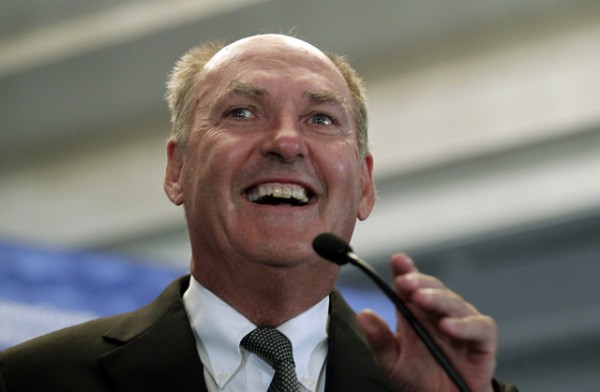The Big Ten’s Shift East Begins in Earnest Next Season
Posted by Alex Moscoso on April 7th, 2016On Monday night in Houston, Villanova’s Kris Jenkins hit a three-point buzzer-beater to lift his team over North Carolina for the school’s second championship all-time and the first for the remade basketball-only Big East. Having one of the conference’s premier programs reach the sport’s pinnacle gives the Big East a much-needed boost in relevance. However, that sense of accomplishment could be fleeting. Enter the Big Ten, which starting next year will initiate a series of expansive events in the northeastern United States, essentially trying to establish a beachhead in traditional ACC and Big East territory. For example, the 2017 Big Ten Tournament will be in Washington D.C. and the 2018 edition will be in New York. The league will also continue its “Super Saturday – College Hoops & Hockey” double-header in Madison Square Garden until at least 2019. This strategic shift focused on the Northeast marks the beginning of an arms race for the nation’s most coveted television markets.

The Big Ten starts its eastern offensive with the Big Ten Tournament in Washington, DC and New York over the next two seasons.
Recent championship aside, the Big East’s reorganization of a footprint that left half of its schools in the Midwest resulted in a vacuum. A 12-year contract with the fledgling Fox Sports 1 network, significantly restricting its viewing audience (average viewership for a Big East FS1 game is 91,000 people), hasn’t helped. The Big Ten, on the other hand, has a $1 billion contract with ESPN along with its own Big Ten Network, which reaches 90 million households. It’s with these munitions that Big Ten commissioner Jim Delany plans on swamping the East Coast with Big Ten basketball for the rest of the decade. He hopes to capture the market by blowing out any lingering Big East passion and outflanking the ACC in its own surge northward.
Delany has fully embraced conference realignment. His prescient strategy of expansion, which included the additions of East Coast teams like Maryland and Rutgers, has placed the league in prime position to penetrate the Acela Corridor. There has been some resulting consternation among Big Ten fans with a few of the outcomes, such as their teams being regularly subjected to Rutgers athletics. But some alumni are also anxious that a geographical shift eastward will change the culture of the traditionally Midwestern conference. For the more altruistic fans, it represents something even more sinister — serving as further evidence that this proud and historic conference has finally turned into a corrosive, rent-seeking sports cartel. But if we can stem our queasiness for a moment and remove the veil that college athletics has been anything but big business for a while, then we can understand that this shift is a necessary maneuver to ensure that the Big Ten remains one of the most powerful conferences in the country.

Jim Delany continues to be ahead of the game with his push to corner the northeastern market. (AP).
For starters, a total of 45 million people (17 percent of the United States) call the Northeast their home, and the region generates approximately one-fifth of the nation’s GDP. Second, the area is a major hub for Big Ten alumni, as supported by a quick analysis of LinkedIn showing that, after Chicago, the metropolitan areas of Washington, DC, and New York are where the most Big Ten alumni reside. It just doesn’t make good financial sense to ignore the many interested eyeballs in those areas. In addition to eyeballs and dollars, the Big Ten is also competing with the other leagues for talent. What Delany is hoping to do before the ACC and Big East can is to showcase its talent as much as possible, build solid recruiting and networking ties, and hope to create a “moment” that drives the league forward in this region. What might that moment look like? It could be a triple-overtime game in Madison Square Garden on Super Saturday. Or Maryland winning the Big Ten Tournament in DC. Or anything that would hook an 11- or 12-year-old future top prospect to the Big Ten brand and persuade him to play his college ball in the Midwest.
In summary: viewership, money and recruits. The Northeast has all three in spades. And since this is the business strategy that the Big Ten has chosen, expansion into the most influential, populous, and richest region of the country is a necessary evil in its quest for conference superiority.












































